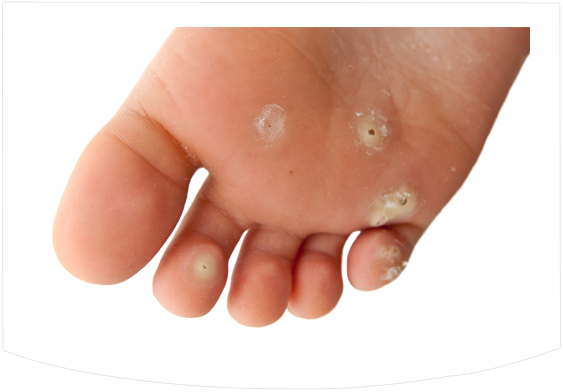Corns and calluses are areas of hard, thickened skin that develop when the skin is exposed to excessive pressure or friction
Corns generally occur at pressure points, typically the bottom of the feet and the sides of toes. They can be painful.
Calluses are thickenings of the outermost layer of the skin and are painless. They can develop on hands, feet, or anywhere there is repeated friction — even on a violinist’s chin
We at Orthofit use non-surgical methods to treat Corns & Callus


